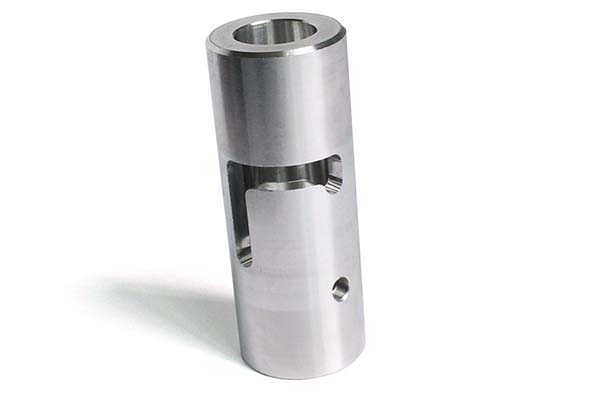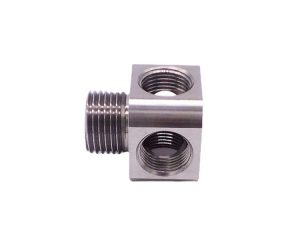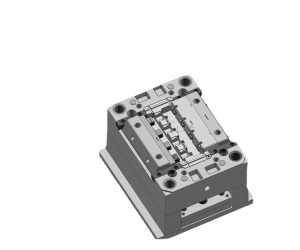Introduction
In the vast and dynamic world of manufacturing, metal machining services play a pivotal role. They are the backbone that enables the creation of precision parts and components across a diverse range of industries. From the intricate components in aerospace machinery to the robust parts in automotive engines, metal machining services are essential for bringing ideas from the drawing board to physical reality.
As industries continue to evolve and demand higher levels of precision, efficiency, and innovation, understanding the different types of metal machining services available becomes crucial. Whether you are a manufacturer looking to outsource metal machining work, an engineer designing a new product, or simply someone interested in the fascinating world of manufacturing, Yigu Technology guide will provide you with in - depth insights into the various metal machining services at your disposal.
Types of Metal Machining Services
Milling
Milling is a highly versatile metal machining process that uses a rotating cutting tool to remove material from a stationary workpiece. Yigu Technology process can create a wide variety of complex shapes and profiles, making it a popular choice in many industries.
There are several techniques within milling. Face milling is primarily used to create flat surfaces on the workpiece. It's an efficient method for machining large, flat areas and is often employed in the initial stages of creating a smooth base for further operations. For example, in the production of engine blocks in the automotive industry, face milling is used to create flat mating surfaces that ensure a proper seal for components like cylinder heads.
Peripheral milling, on the other hand, is used to create grooves and slots along the edges of the workpiece. This technique is crucial in the manufacturing of components such as gears, where precise grooves are needed to mesh with other gears. In the aerospace industry, peripheral milling is used to create slots in turbine blades, which are essential for their proper functioning.
3D milling is a more advanced technique that is ideal for creating complex, three - dimensional shapes and geometries. With the help of computer - aided design (CAD) and computer - aided manufacturing (CAM) systems, 3D milling can bring highly intricate designs to life. For instance, in the production of medical implants, 3D milling allows for the creation of customized implants that fit the unique anatomy of patients. These implants often have complex, curved surfaces that require the precision and flexibility of 3D milling.
Turning
Turning is a machining process where the workpiece rotates while a stationary cutting tool removes material. Yigu Technology process is well - suited for creating cylindrical parts and components.
External turning is used to shape the outer diameter of the workpiece. It is commonly used in the production of shafts, which are crucial components in many mechanical systems. For example, in a car engine, the crankshaft is a long, cylindrical shaft that is produced through external turning. The precise shaping of the outer diameter of the crankshaft is essential for its proper rotation and the efficient transfer of power within the engine.
Internal turning is used to create internal features such as holes and threads. In the manufacturing of hydraulic cylinders, internal turning is used to create smooth, accurately sized bores that allow for the seamless movement of pistons. Thread turning, as the name implies, is used to create precise threads on cylindrical parts. This is important in applications where parts need to be screwed together, such as in plumbing fittings or in the assembly of machinery.
Drilling
Drilling is the process of creating holes in a workpiece using a rotating cutting tool. It is a fundamental operation in metal machining and is used across a wide range of industries.
Spot drilling is used to create precise starting points for deeper holes. This is important because it helps to ensure that the subsequent drilling operation is accurate and does not wander off - course. For example, in the manufacturing of printed circuit boards (PCBs), spot drilling is used to create small, precise holes where components will be mounted.
Deep hole drilling is used to create long, deep holes with high accuracy. This technique is often employed in the aerospace industry, where components such as landing gear struts require deep holes for the insertion of bolts and other fasteners. These holes need to be drilled with extreme precision to ensure the structural integrity of the components.
Counterboring is used to create precise, chamfered edges on holes. This is useful in applications where a bolt head or nut needs to be recessed into the workpiece, creating a flush or smooth surface. In the construction of machinery, counterboring is often used to create a proper seating for bolts, which helps to distribute the load evenly and prevent loosening over time.
Grinding
Yigu Technology Grinding is a machining process that uses an abrasive wheel to remove material from a workpiece, achieving high precision and smooth surface finishes.
Surface grinding is used to create flat surfaces with high accuracy. It is commonly used in the production of precision - machined parts where flatness and surface finish are critical. For example, in the manufacturing of optical components, surface grinding is used to create flat surfaces on lenses and mirrors, ensuring that they have the correct optical properties.
Cylindrical grinding is used to create precise cylindrical shapes. This technique is often employed in the production of components such as bearings, where the inner and outer races need to have a very precise cylindrical shape to ensure smooth rotation.
Internal grinding is used to create internal features with high precision. In the manufacturing of engine cylinders, internal grinding is used to create a smooth, accurately sized bore that allows for the efficient combustion of fuel and the proper movement of the piston.
Welding
Welding is the process of joining two or more metal parts by heating them to a molten state and allowing them to cool and solidify together.
Arc welding uses an electric arc to melt the base metal and filler material. It is a widely used welding technique due to its versatility and relatively low cost. In the construction industry, arc welding is used to join large steel beams together to form the framework of buildings and bridges.
Gas welding uses a gas flame to heat the metal and filler material. This technique is often used for smaller - scale projects or in situations where portability is important. For example, gas welding can be used to repair small metal components in a workshop or on - site.
Laser welding uses a high - energy laser beam to join metal parts with high precision. It is commonly used in the automotive and electronics industries, where the need for precise and clean welds is crucial. In the production of automotive body panels, laser welding is used to create strong, seamless joints that improve the structural integrity and aesthetics of the vehicle.
Comparison of Metal Machining Services
Tabular Comparison
To better understand the differences between the various metal machining services, let's take a look at the following comparison table:
| Machining Service | Machining Characteristics | Precision Range | Applicable Materials | Cost Range |
| Milling | Versatile, can create complex shapes. Face milling for flat surfaces, peripheral milling for grooves, 3D milling for complex 3D geometries | IT6 - IT10 | Aço, aluminum, titanium, copper, and various alloys | Medium - High. Cost depends on complexity, tooling, and machine time |
| Turning | Ideal for cylindrical parts. External turning for outer diameter, internal turning for internal features, thread turning for threads | IT6 - IT8 | Similar to milling, also suitable for non - ferrous metals like brass | Medium. Depends on workpiece material, complexity, and production volume |
| Drilling | Fundamental for hole - making. Spot drilling for starting points, deep hole drilling for long holes, counterboring for chamfered edges | IT10 - IT13 for general drilling, higher precision with additional processes | Almost all metals, including hardened steels | Low - Medium. Main costs are drill bits and machine time |
| Grinding | Achieves high precision and smooth surface finishes. Surface grinding for flat surfaces, cylindrical grinding for cylindrical shapes, internal grinding for internal features | IT5 - IT7 | Wide range, including hardened steels, ceramics, and carbides | High. Due to high - precision equipment and time - consuming processes |
| Welding | Joins metal parts by melting. Arc welding with electric arc, gas welding with gas flame, laser welding with laser beam | Varies depending on process and post - welding treatment | Most metals, with some limitations for dissimilar metals | Low - High. Gas welding is relatively inexpensive, while laser welding is costly due to equipment and expertise |
Yigu Technology table clearly shows that each metal machining service has its own unique characteristics, precision levels, material compatibilities, and cost implications. For example, if you need to create a flat surface with high precision and a smooth finish on a hardened steel workpiece, grinding would be a better choice than milling. On the other hand, if you want to create a complex 3D shape on an aluminum alloy workpiece, 3D milling would be more suitable.
Case Study Comparison
Let's consider a real - world example in the aerospace industry: the production of an aircraft engine turbine blade. This critical component requires high precision, excellent surface finish, and the ability to withstand extreme temperatures and mechanical stresses.
Milling: If milling is used to manufacture the turbine blade, 3D milling would likely be employed. The complex aerodynamic shape of the blade can be achieved by carefully programming the milling machine to remove material in a precise manner. However, milling may require multiple setups and a significant amount of machining time, which can increase costs. For example, in a small - scale production run of 100 turbine blades, the milling process might take around 20 hours per blade, with a total machining cost of approximately $500 per blade, including tooling and machine time.
Turning: Turning is not the primary process for turbine blades as they are not primarily cylindrical in shape. But if there are some cylindrical features on the blade's root or attachment points, turning can be used to machine those parts. However, for the overall blade shape, turning alone would not be sufficient.
Drilling: Drilling is used in the turbine blade manufacturing process to create holes for cooling channels or for attaching the blade to the rotor. Spot drilling is first used to create accurate starting points for deeper holes. The cost of drilling these holes is relatively low compared to other processes. For a set of 10 holes in a turbine blade, the drilling cost might be around $50, including the cost of drill bits and machine time.
Grinding: Grinding is often used as a finishing process for turbine blades. After milling or other shaping processes, surface grinding can be used to achieve the final smooth surface finish required for the blade's aerodynamic performance. Grinding can also correct any minor dimensional inaccuracies left by previous processes. The cost of grinding a turbine blade can be high, around $300 per blade, due to the use of high - precision grinding equipment and the need for skilled operators.
Welding: Welding is not typically used to manufacture a single - piece turbine blade. However, in some cases where the blade is made up of multiple parts (such as a blade with a brazed - on tip for enhanced heat resistance), welding techniques like laser welding may be used. Laser welding can provide a high - quality, precise joint, but it is a costly process. The cost of laser - welding a turbine blade component could be in the range of 1000 - 2000, depending on the complexity of the joint and the equipment used.
By comparing these different machining services for the production of a turbine blade, it becomes clear that a combination of processes is usually required to achieve the best results in terms of quality, cost, and production efficiency. Each process has its own strengths and weaknesses, and the choice of process depends on the specific requirements of the part being manufactured.
Factors to Consider When Choosing Metal Machining Services
Industry Requirements
The requirements for metal machining services vary greatly from one industry to another. In the aerospace industry, for example, parts need to be extremely precise. Components such as turbine blades and engine casings must have tight tolerances, often in the range of a few micrometers. This is because even the slightest deviation can lead to catastrophic failures during flight. Materials used in aerospace are also often high - performance alloys like titanium and nickel - based superalloys, which require specialized machining techniques due to their high strength and heat - resistance.
When choosing a metal machining service, it is essential to consider the specific requirements of your industry. A service provider that has experience in your industry will be more likely to understand your needs and have the appropriate equipment and expertise to meet them.
Cost - Benefit Analysis
Cost is a significant factor when choosing metal machining services. The cost of machining services can be broken down into several components: equipment cost, which includes the purchase, maintenance, and depreciation of machining tools such as milling machines, lathes, and grinders; labor cost, covering the wages of skilled operators, engineers, and technicians; and material cost, which depends on the type and quantity of metal materials used. It is important to strike a balance between cost and quality. Sometimes, choosing a slightly more expensive machining service that offers higher quality and faster turnaround times can be more beneficial in the long run, as it can reduce the risk of product failures, rework, and delays.
Quality and Precision Requirements
High - precision parts demand advanced machining processes and state - of - the - art equipment. In industries such as electronics and optics, parts often need to be machined to sub - micrometer tolerances. To ensure that the machining service meets the quality standards, it is important to check the service provider's quality control processes. In addition, the experience and skills of the machining team are crucial.
FAQs
What are the most common metal materials used in metal machining services?
The most common Yigu Technology metal materials used in metal machining services include aluminum, iron, stainless steel, copper, and titanium. Aluminum is a popular choice due to its low density, high strength - to - weight ratio, and excellent corrosion resistance. It is widely used in the aerospace, automotive, and electronics industries. For example, in the aerospace industry, aluminum alloys are used to make aircraft wings and fuselages to reduce weight and improve fuel efficiency.
Iron, especially in the form of steel (an alloy of iron and carbon), is one of the most widely used metals in machining. Stainless steel, which contains chromium and sometimes nickel and other alloying elements, is highly corrosion - Copper is valued for its excellent electrical and thermal conductivity. Titanium is a strong, lightweight metal with excellent corrosion resistance, especially in harsh environments.
How can I ensure the quality of metal machining services?
To ensure the quality of Yigu Technology metal machining services, several steps can be taken. First, choose a machining service provider with relevant experience and a good reputation. Secondly, check the provider's equipment and technology. Another important aspect is the quality control processes of the machining service provider.
What are the typical lead times for metal machining services?
In general, for small, simple orders, lead times can be as short as 3 - 7 business days. For medium - sized orders with moderate complexity, lead times may be 1 - 3 weeks. For large, complex orders, especially those with tight tolerances and high - quality requirements, lead times can extend to 4 - 12 weeks or even longer, depending on the specific circumstances.



